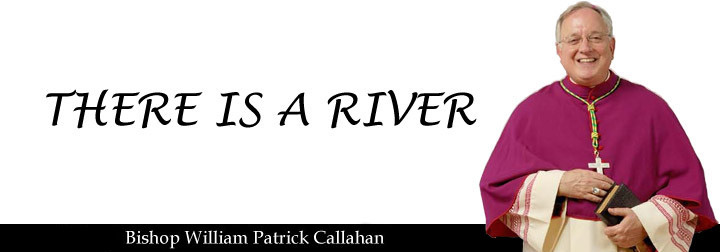Divine Mercy greetings to you, my brothers and sisters!
The feast of Divine Mercy was established on April 30, 2000, by Pope John Paul II. The occasion was the beatification of St. Faustina Kowalska, the Polish nun who received visions and words from Jesus in the 1920s and 1930s. In short, Jesus’ message to St. Faustina is that mercy and peace are available to all through the blood and water streaming from his open heart.
But April 30, 2000, was not only the canonization of St. Faustina and the inauguration of Divine Mercy Sunday, it was also—like today—the Second Sunday of Easter. Divine Mercy, then, has an essential connection to the Easter Mystery. Like a musical octave, where a particular note is elevated eight notes above it, the Octave of Easter takes the Easter Mystery as its base and elevates, amplifies, and complements it. Christ’s mercy, celebrated on this day, thus has its source in his opened heart preceding his resurrection. Consider how on this day, the Octave of Easter, we hear how Jesus invites Thomas the Apostle to “bring your hand and put it into my side” (John 20:27). The fount of mercy we enjoy on this day draws us back to the opened heart of Jesus and the heart of the Easter Mystery.
This glorious day bears yet another name, one further complementing its position as “Second Sunday of Easter” or “Divine Mercy Sunday.” Many Masses during the liturgical year are named after the first words of their entrance antiphon. Back on the Fourth Sunday of Lent, for example, the Church celebrated Laetare Sunday, or “Rejoice” Sunday, after the first words of the entrance antiphon, “Rejoice, Jerusalem, and all who love her” (see Isaiah 66:10). On this day, the Church celebrates Quasimodo Sunday, after the text, “Like [quasimodo] newborn infants, you must long for the pure, spiritual milk, that in him you may grow to salvation, alleluia” (1 Peter 2:2). (This also explains the name of Notre Dame’s “Hunchback,” who was found on the steps of Paris’s great cathedral on this day.)
What we have, then, on this Solemnity are several interrelated and marvelous truths: the Octave of the Easter Mystery, which is a special occasion to receive divine mercy, will restore us to new life once again.
So many of the Church’s texts speak about our potential for new life in Christ. “On this [Easter] day is created the true man, the man made in the image and likeness of God. For this day the Lord has made is the beginning of this new world” (St. Gregory of Nyssa, Office of Readings on Monday of the Fifth Week of Easter).
As we celebrate Divine Mercy Sunday, then, let us keep before our minds the new life, the new mercy, and the new peace offered to us by Jesus risen from the dead. Such was his whole purpose in coming to save us: “I came so that they might have life and have it more abundantly” (John 10:10).
Bishop William Patrick Callahan
